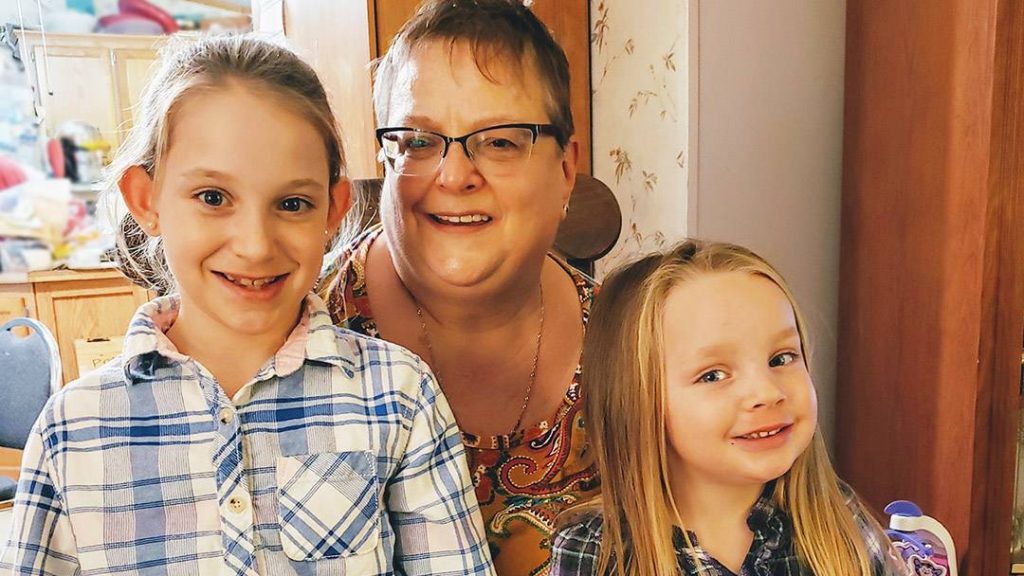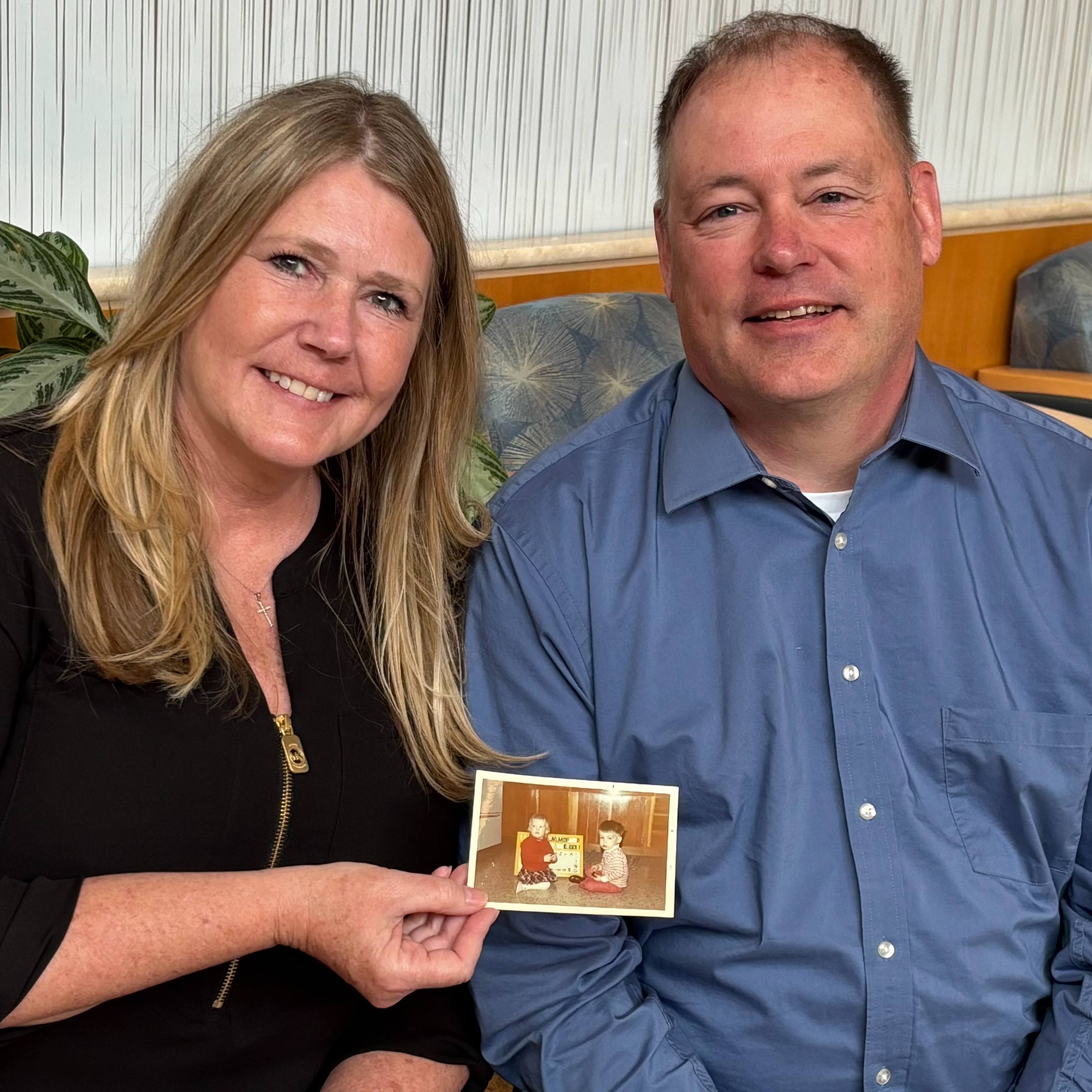-
Back in Control After Successful Incontinence Treatment

For years, Roxann Neumann, kept spare clothes in her car and desk for the days when incontinence got the best of her. But after an innovative surgery that resets the nerve signals between the brain, bladder and bowel, Roxann's incontinence has improved immensely, and the extra clothing is back in her closet.
Roxann Neumann loves nothing more than holding and snuggling her eight little grandchildren. Until recently, however, Roxann was affected by urinary incontinence, and lifting the children triggered an extremely uncomfortable experience.
"Picking up my 3-year-old granddaughter, I could completely soak a super absorbent pad and go through to my underwear," Roxann says.
Not only did Roxann have overactive bladder that caused her to routinely leak urine, she also struggled with irritable bowel syndrome and experienced bowel incontinence. Roxann combated the exasperating condition for years using traditional approaches. But lifestyle modification, medication and pelvic floor strengthening exercises did not stop her symptoms. "I was pretty much told this is the way it is," Roxann says.
In summer 2019, however, Roxann saw a new primary care provider who offered a different perspective. A visit with Marvin Vaughan, M.D., at Mayo Family Clinic Northeast, opened a door that led Roxann in a new direction toward a permanent remedy for the incessant leaking. "(Dr. Vaughan) listened to my issues and asked me, 'Has anyone sent you to urogynecology?'" Roxann says. "I said no, and he said, 'Well, let's do that,' and that's how I met Dr. Linder."
Under the care of Brian Linder, M.D., a Mayo Clinic urologist and urogynecologic surgeon, Roxann learned about an innovative therapy for urine and bowel incontinence called sacral nerve stimulation. Sacral nerve stimulation, sometimes called sacral neuromodulation, targets the nerves that signal the brain that it's time to release the bladder or bowel. The treatment can greatly diminish symptoms related to urgency leaking.
In September 2019, Dr. Linder implanted a sacral neuromodulation device into Roxann's lower back during an outpatient procedure. Since then, Roxann's life has undergone a profound change.
"I never dreamt it could be this way again. I was hoping for help with one or the other (the bladder or the bowel issue). I didn't imagine I would have both," Roxann says. "When the grandkids come over, they love for grandma to pick them up and cuddle. I can do that now and not worry. And that's such a comfort."
Escalating symptoms
Roxann's symptoms of urinary incontinence started mildly years ago. Decades of horseback riding and the delivery of six babies affected her pelvic floor muscles and her ability to control elimination. "The last three years were the worst, but I've been having issues for probably the last seven years," she says. "When we'd go out anywhere, my husband would always scope out to see where the ladies' room was, so I could make a fast trip if I needed to."
Eventually, the leaking got so bad that Roxann began keeping spare clothes in her desk at work and in her car. "I can't tell you how many pairs of clothing I've had to toss over the last several years," she says.
Worse than the inconvenience her condition presented during waking hours was the implications that the frequent and urgent need to urinate had on her sleep. "I was getting up every half hour to go to the bathroom, so I wasn't getting any rest," Roxann says.
"Treatment with sacral neuromodulation is FDA-approved for both overactive bladder, as well as accidental bowel leakage. The idea is that it's normalizing the control of bladder reflexes."
Brian Linder, M.D.
Roxann took prescription medications designed to decrease the frequency of urination. They were helpful, but she still was using the bathroom every hour or so. Years of practicing pelvic floor exercises, called Kegel exercises, did not decrease her symptoms. At Dr. Linder's recommendation, Roxann also tried a therapy that supplied external electrical stimulation to the pelvic floor, but that didn't stop the leaks either.
When the electric stimulation failed, Dr. Linder talked to Roxann about sacral nerve stimulation. "Treatment with sacral neuromodulation is FDA-approved for both overactive bladder, as well as accidental bowel leakage," says Dr. Linder, who has implanted approximately 25 such devices in patients at Mayo Clinic in the past year. "The idea is that it's normalizing the control of bladder reflexes."
In people who have incontinence, there is a breakdown in the communication between the brain and the sacral nerves. "The signals aren't lining up how they're supposed to. Instead of the brain being able to say now is not the time to void, the reflex that makes the bladder respond and then squeeze to empty fires on its own," Dr. Linder explains. "So sending a signal with sacral nerve stimulation modulates how the body responds. It's kind of like rebooting the software."
When Dr. Linder told Roxann how sacral nerve stimulation works, and that it can effectively treat bowel and bladder incontinence, Roxann says her ears perked up, and she asked for more information. That evening, Roxann and her husband reviewed the literature on sacral neuromodulation at home. "He looked at it, and I looked at it, and we looked at each other and said, 'This could be the answer,'" Roxann recalls.
Long-term results
More and more, sacral neuromodulation is becoming the answer for many women, and some men, with bladder and bowel incontinence, Dr. Linder says, adding that, until recently, it wasn't widely offered at Mayo Clinic. The treatment is not designed to treat stress incontinence, which is leaking associated with coughing or sneezing.
"To have overactive bladder is very common. Many people start treatment with an oral medicine, but they may not know there are treatments beyond oral medication if they're not having adequate symptom control," Dr. Linder says. "The overall proportion of women who go on to a therapy like this is relatively small. But it's important to know that this option and others are out there for symptoms that cannot be otherwise controlled."
From Roxann's perspective, having access to a physician who worked with her to find an effective treatment made all the difference. "Dr. Linder really went the extra mile in trying to find something that was going to work," she says. "He told me I could do all the electrical stimulation and all of the Kegels I wanted, but it was never going to take care of the issues I had. It was like: 'Yes. Finally somebody finally understands.'"
"People have got to know there is help out there if you do have this problem. Dr. Linder made such a difference in my life, and I'm willing to let people know."
Roxann Neumann
A few weeks after learning about the treatment, Roxann underwent the first phase of a two-part operation to implant the neurostimulator. During the first step, Dr. Linder placed a wire with four electrical leads into Roxann's lower back, near the nerves that control the bladder and rectum. The wire exited her body and attached to an external battery taped to her back.
Roxann wore the external battery for about two weeks as a trial to test the effectiveness of the device, which has seven program settings. "There are four electrodes on the wire itself, so you can change the settings between which of these four electrodes are getting stimulation," Dr. Linder says.
When Roxann woke up from the procedure, she was confident things would be different. "Right from the start, I knew it was going to work," she says. "When I got off the cart coming from the procedure, I was able to walk to the bathroom, and I didn't leave a trail."
Two weeks after the first surgery, Dr. Linder performed the second part of the operation and implanted a small battery into a pocket that he created under Roxann's skin in her lower back. Since undergoing the treatment, Roxann has a renewed vigor for life and readily tells people about her remarkable transformation thanks to the sacral nerve stimulation.
"Not many people are willing to talk about it," she says. "Who wants people to know that they were incontinent of the bowel and bladder? But people have got to know there is help out there if you do have this problem. Dr. Linder made such a difference in my life, and I'm willing to let people know."
HELPFUL LINKS
- Learn more about overactive bladder.
- Check out surgical treatments for urinary incontinence.
- Learn more about urogynecology at Mayo Clinic.
- Explore Mayo Clinic.
- Request an appointment.







